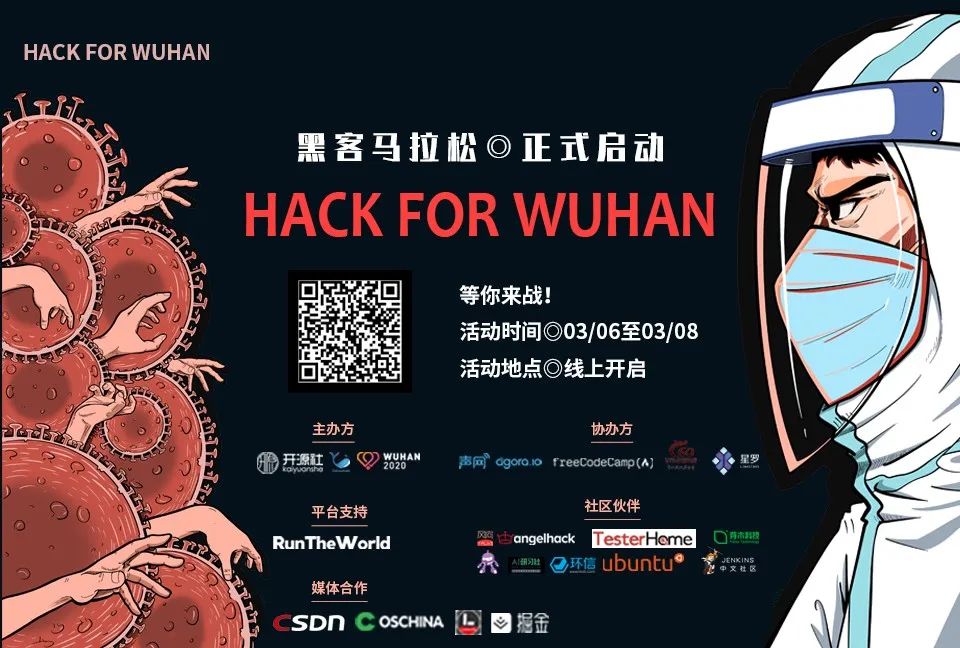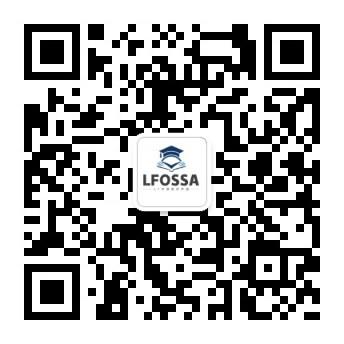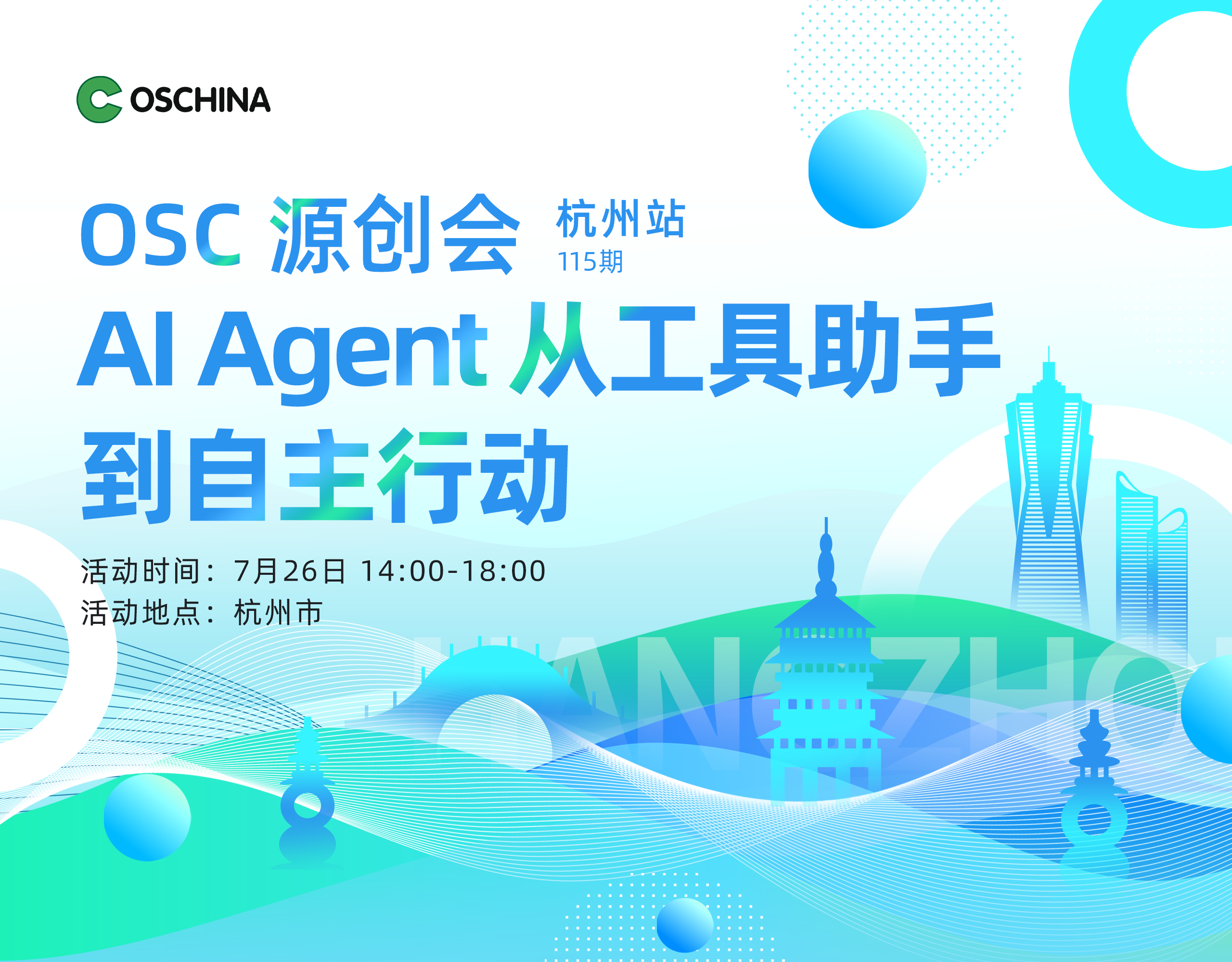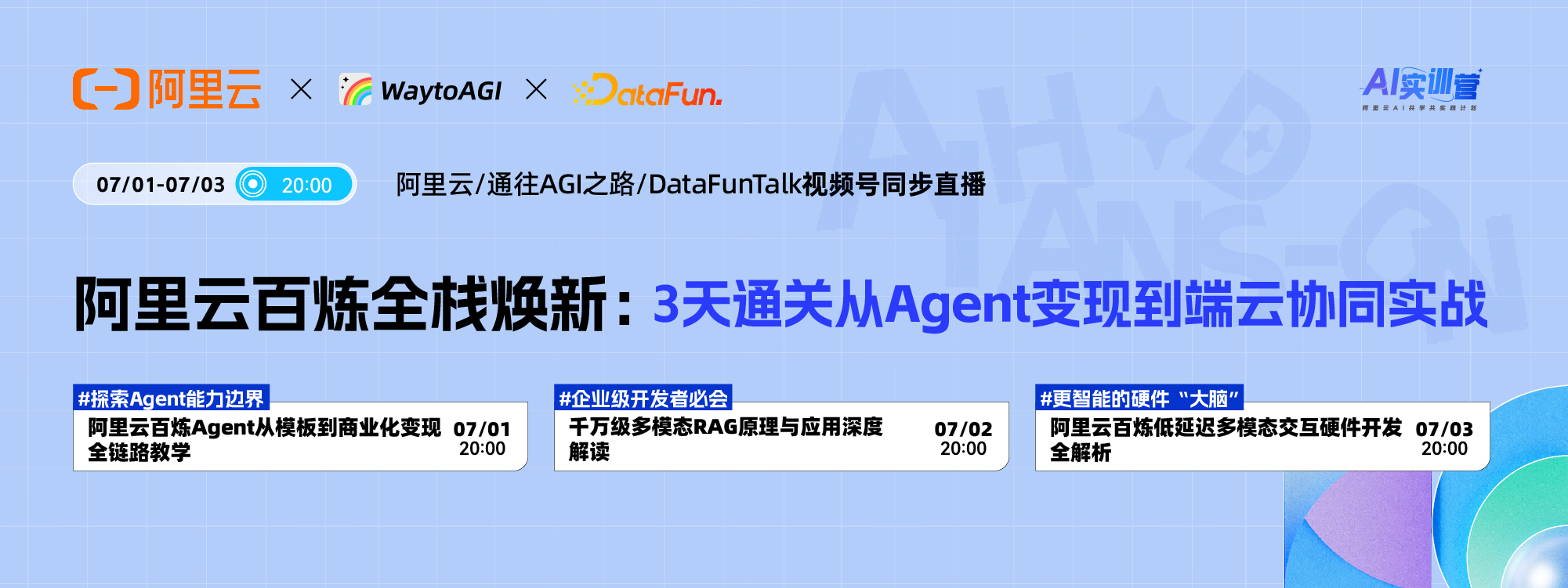Click above“ Kaiyuan Cooperative ”Follow us

|Reprinted from:
Morningside
|Editor in charge: Corrie
Chen Zhe
Vice President of Chenxing Capital
In recent years, more and more new technologies and projects are organized in the form of open source software, and technological innovation and commercial innovation often complement each other. Many great open source projects have created successful commercial open source software companies.
So recently, as a host, I participated in the podcast "Open Source in the Year of the Rat" jointly produced by "The Way of Open Source" and "Social Science and Technology Review", and talked with senior seniors and founders of the open source industry about the commercialization of open source projects and the characteristics and difficulties of their landing and development in China.
While paying attention to the epidemic, we also hope to change our perspective and bring some dry goods and inspiration to everyone.
Below, we have sorted out the main wonderful dialogues in this podcast, from which you can learn:
-
The three stages of open source project commercialization and the five main business models at present, the actual case of Confluent, Atlassian and a domestic enterprise;
-
Localization of Chinese open source projects;
-
If large companies do it, how will the startup team compete? Experience: how APISIX cooperates with Tencent Cloud;
-
What tips do you have for international open source projects to operate abroad? Experience: GAAS's operating experience in the United States is from 0-1;
-
What are the valuable directions of open source projects in 2020?
If you are also interested in open source and are ready to start a business or have already started a business, please contact me. My email is peterchen@morningsidevc.com 。
The full text is 6760 words, which takes about 20 minutes to read; Click "Read the original text" at the end of the text to listen to the complete dialogue audio.
Guest profile (in order of appearance):
Han Yang: anchor of Social Man Science and Technology Review, founder of GAAS, an open-source autonomous flight software.
Jiang Tao: He has developed giant handwritten computers, Kingsoft PowerWord, Hero Super Jieba and other products, and later founded CSDN, which is the world's largest Chinese IT community.
Chen Zhe: Vice President of Chenxing Capital, once worked at Google, BlackBerry, as a senior engineer. Focus on intelligent manufacturing, artificial intelligence and black technology.
Wen Ming: Co founder of Tributary Technology, Apache APISIX PPMC。
The content of the article only represents the independent views of the guests.
What are the business models for the commercialization of open source projects?
Hanyang:
Our company has made an open source framework for autonomous flight of aircraft. The project itself has a feature that our software needs to be combined with hardware, so our open source commercialization can be done by hardware. It's a bit like the relationship between CPU and Windows. This operating system can be free of charge, but he wants to buy my hardware.
Many domestic users, especially paid industrial users, will be worried. They have never seen open source before. The first question is how do you make money if you open source? For us, there are two modes of making money,
One is to sell the product to you, the other is that after I give you the open source product, you don't understand, you pay me, and I will do some services for you.
Jiang Tao:
Focusing on developers' commercial software, their payment proportion and income scale are very small, which is a status quo and a huge challenge for Chinese open source products.
But now
These companies also face an opportunity, the decoupling between China and the United States. These customers are rebuilding their core technology systems. In the past, this system was mostly based on foreign commercial software, so this system now needs to be refreshed and upgraded.
Chinese companies willing to pay are not Internet companies, but some industrial companies, which used to rely on closed source software systems of foreign commercial companies, such as Oracle, IBM, Now they want to replace these systems, but if they want to use open source software, first, their own research and development capabilities are insufficient, and second, they hope someone can provide them with more comprehensive technical support.
It is also an opportunity for you to create a better technical service company around these open source products without even completely developing from scratch. Like Confluent, one of his founders is Chinese. Last year, he came to China to participate in a forum called Financial Industry Forum. About 200 people sat down and asked, "Who use our Kafka?" Two thirds of them raised their hands, but he did not have a sales or technical support in China. This is the charm of open source products. By opening source code, you have lowered the threshold for users to enter. Users have already used your products or contacted your products before your sales. When you do sales, users who recognize your products will be more willing to pay.
The core point for the commercialization of open source projects is that your business model must find a user group willing to pay. If you find it wrong, your commercialization will be difficult to form a scale.
Chen Zhe:
As for the business model of open source projects, I think commercial open source companies around the world may have gone through three different stages:
-
The first companies like RedHat, Openstack and Cloudera derived from Linux were actually
Mainly selling support and services, this may be the 1.0 era of open source commerce ,
Relatively speaking, it is not so large-scale.
-
In the 2.0 era, we call many modes of additional function authorization based on open source software the OpenCore mode.
Typical Kafka of Confluent and Elastic Search all open source their core functions, but some additional functions, such as performance monitoring or data analysis, are provided in the form of authorization.
-
The era of 3.0 is also a model that many new, or larger, or even 10 billion dollar companies are more advocating
Complete cloud based SaaS, or the so-called management service.
The typical ones like MongoDB, Automatic, and even GitHub belong to this management service. It has become a complete software solution delivered to customers in the form of SaaS.
I am also very concerned about this form of 3.0,
If public cloud can be further penetrated and SaaS subscription mode can be further penetrated, the profitability, financial status and growth of commercial open source software companies in this mode will be greatly improved.
If this condition can be verified, I believe that China will have the opportunity to create an open source software company worth 1 billion or even 10 billion dollars in the future.
Hanyang:
I have done a survey myself before. There is an investment company called OSS Capital in the United States that specializes in open source projects. They have listed a table of open source companies with annual income of more than 100 million dollars on Google Docs. I have investigated those companies one by one, and found that there are almost five different business models of their actual open source companies:
-
First, the most primitive, you give me the money, and we'll do it.
Like Linux and RedHat, this is a solution.
-
Second, individual users are free, and enterprise users are charged.
-
The third is that I only open source some of them, and the other part is that you come to me to buy them.
-
The fourth, relatively new, is the hybrid protocol ,
That is to say, when different users use my product, the agreement is completely different.
-
The fifth is the cloud based hosting.
If you look at the stock performance, you will find that the open-source companies that have performed best in the U.S. stock market in the past three or four years are basically cloud hosted companies, and the effect of the traditional hybrid agreement or enterprise version charging companies, at least in terms of stock prices, is not like those of cloud hosted companies.
Jiang Tao:
Yes, but for the fifth mode, I think the biggest difficulty is that China's cloud manufacturers are too powerful, so they will continue to add these functions. In the United States, they can use laws and agreements to restrain these cloud manufacturers, while in China, you can hardly restrain cloud manufacturers.
So I think that in China, the cloud mode, more I think, is to find the right industry and then do privatization. I think there are several characteristics of the commercialization of China's open source projects:
First, private cloud is definitely a great opportunity for China from the perspective of software development and open source software.
Another point is to make overall solutions.
The domestic companies that are willing to pay are all relatively weak in their technical ability, which is significantly different from that of the United States. The average level of American developers is good, which is called spindle structure. While the top talents in China are concentrated in BAT, Toutiao, Meituan, Xiaomi and other top companies, the ability of technical talents below the top companies is relatively weak.
We have invested in a company to do AB Testing. We purchased a batch of their products at that time. After two months, I checked our use internally and found that they were useless. Why? The employee said sorry, boss, we ran out of quota. I called the CEO and he said that he had allocated you a quota of 1 billion yuan, and you ran out of it in less than half a month. I said that although the traffic is large, it is not used like this, is it? I said have you trained us? He said that he had trained more than three times. So this is a question of ability. When developers of most Chinese companies combine these products, they have defects in their ability, so we need an overall solution.
Later, I asked the CEO of the company, how about the usage of your paying users? When he checked, more than half of them failed. It is a very fatal thing that everyone spent money but didn't use it in the end. I said you should change your business model. You can't sell technology anymore. People can't use it. Don't you do AB Testing? Isn't it to solve the problem of others' operation? When you changed to the overall solution, your original system sold for 150000 yuan, but now you sell more than three times. I will help you make the results, and then you can improve the conversion rate. Later, his list will reach 500000 to 1 million yuan.
In the United States, a large number of companies provide one product and one service, and you can combine them yourself. But in China, the database may be a special case. For other things, customers need an overall solution.
Chen Zhe:
An article by Stephen of RedMonk, 《How to compete with AWS》, When it comes to the IaaS path of AWS, a large number of original components are supported, Primitives, In fact, it depends on the customer and his partners for reassembly. Therefore, this Primitives based form is particularly suitable for foreign environments. It is suitable for individuals or start-ups to start. It may be to solve a small problem. For example, Kafka started as a message queue. This tool attribute is more common in foreign start-ups.
However, after the generalization of AWS services, the difficulty of customer acceptance is increasing, and more integrated products will appear in foreign markets in the future. Under such a trend, it means
Chinese start-ups or open source software commercialization may need to be closer to the needs of Chinese customers and provide complete solutions.
Jiang Tao:
We and Atlassian About seven years ago, he signed a strategic cooperation agreement. At that time, he had 20000 paying users. He said that 70% of my users paid by credit card, and his price was only 99 dollars, which means that your employees can buy a software with the money of a meal. This is actually a strategy. Later, a lot of companies actually used this strategy. The price is very low, and developers can pay for it themselves. And I think the best thing about open source is that it lowers the threshold for users to access your products, which is a particularly good means.
Because in this way, the sales of open source products become very smooth, so that users can recognize you first, and then buy them. When they buy them, they have relatively low costs. Moreover, in the future, the decision-making power of such low-cost software procurement and use will be transferred from more bosses to technicians and developers. I think there is still a lot of space and opportunities in this market.
The voice of developers is very important in the development of open source software, and of course the community is also very important. These two points will actually promote the development of the industry and related fields.
How do start-ups compete with giants?
Chen Zhe:
two
In 2018 and 19, one of the most prominent situations abroad was that large cloud vendors and open source software companies had some problems competing for profits. For example, AWS directly repackaged or packaged some MongoDB or Elastic products and provided them in the form of cloud services, which may be a business challenge for open source commercial software companies.
So I want to ask you how the new generation of open source software companies in China compete with the cloud manufacturers from Huawei, Tencent, Alibaba and other giants? How to find your own living space?
Wen Ming: For start-ups like us, we prefer a cooperative relationship to compete with some public cloud manufacturers.
I started open source in about 2015. In the recent year, I founded a company to do API gateway for microservices, which is an incubation project of Apache and APISIX. Because we are small,
If Ali and Tencent can use our products, in fact, they will not pay me, and it will be a good endorsement for me to get such a benchmark customer , not only for our potential paying users, but also for our technical and functional improvements.
In addition, for the current domestic public cloud, they will actually do some hybrid cloud deployment. For example, many Chinese enterprises cannot put their own data on the same public cloud. Generally, they will put it on Alibaba or Tencent for backup, and some sensitive data will be placed on their own private cloud. Therefore, enterprises like Alibaba and Tencent will also do some private cloud solutions for users. At this time, he will generally make an overall solution, and will also bring the products of open source manufacturers to the entire solution of users. Because they are not good at this thing, he is more willing to cut the orders he eats and give them to open source manufacturers like us.
We have such a cooperative relationship with Tencent.
You can use my open source projects for free, but you can also bring my paid products into China when you make private orders and overall solutions. This is actually a kind of cooperation mode we hope to reach, rather than a completely competitive relationship.
In addition, although the Sino US trade war and Sino US decoupling are opportunities, from the perspective of developers,
Our goal is not only the domestic market, but also an international project, Therefore, the European and American markets will definitely eat.
We all think that European and American users have a good willingness to pay, accept SaaS, and have a strong ability to pay. The technology of many open source projects in China is not inferior to that of foreign countries, so why can't we go to that market?
In fact, when can China achieve the willingness to pay like Europe and the United States, or be able to accept this SaaS, the timing is not particularly certain, and for small start-ups, it may not be possible to wait until that time.
Overseas internationalization of commercial open source projects
operate
Chen Zhe:
Now that we talk about internationalization, what good experience or suggestions do you have for Chinese companies to internationalize or participate in international projects?
Wen Ming:
Generally speaking, if your open source project wants to be internationalized, then
From your documents to your promotional articles, they should all be in English, and you need to attract as many foreign users as possible, which requires you to do some publicity at some conferences and activities abroad, not just at home.
Another is, Open source projects emphasize a culture of equality, and many of the founders of open source projects in China have a strong desire to control Generally, they are reluctant to delegate some permissions of open source projects, such as merging PR to the trunk or releasing versions, to others, which is actually the bottleneck of project development. If you can't really lower your authority, there will be no way to do internationalization well, because sooner or later you will have many developers, such as some popular projects, there will be hundreds of contributors, and then there will be ten or twenty PMCs. This is actually an important reason why many domestic projects are difficult to integrate into foreign open source culture.
Jiang Tao:
Let me add an example. I don't know whether everyone knows Tron, wave field and Sun Yuchen.
The blockchain field is basically driven by open source projects. Sun Yuchen's Tron is a wonderful hybrid of Bitcoin technology and Ethereum technology. At present, it should be in the top 10 in the world, and its community activity is very high. Its community operation is very successful.
I specifically asked Sun Yuchen how he did it. He said that I am the best player in the blockchain field who can play social networking. He showed me his followers on Twitter and the number of replies and likes he sent to a post on the spot. They are not water soldiers, but real users. Social networking is a very important strategy.
Then we also discussed why Ethereum was built? He said that Vitalik went to meetings every day. When Ethereum was very weak, Vitalik, a small meeting of dozens of people, also ran away.
Social networking is actually a very effective way to launch a community.
Hanyang:
76% of our users are outside the mainland of China, and we have more American developers than Chinese developers.
Here you can share your experience of how to operate from 0 to 1 in foreign countries.
At first, when we wanted to do open source, we didn't know much about it, and we couldn't find a lot of information on the domestic Internet, so we wondered whether we could go to foreign people for advice. Then we contacted a group of people who were famous for doing open source abroad. Finally, we invited Firefox Greater and Central China and the former leader in charge of open source in Asia to be consultants. In the process, we found that it was very easy to find them,
The open source industry is not big, and everyone has a good heart. Basically, if you send an email, he will definitely return it to you, whether he can help you or not.
Later, I told many people about this experience, but I found that many Chinese developers are reluctant to write English emails to foreigners, but in fact, this matter is not so complicated. The language of your email is not good, and no one cares about you. The next Grammarly, if you change your grammar, you can send it to them, probably all the time.
Later, we started to officially open source. We first published articles on Medium, and then
We added a lot of Slack discussion groups in our industry to send our propaganda. Each discussion group has its own rules, and we sent it according to its rules. After that, the first batch of seed users were attracted.
In fact, most industries have their own Slack discussion groups. In contrast, Facebook's group effect is relatively ordinary. Of course, this is just our own experience.
After working on Slack's discussion group for some time, it also ran into a bottleneck. You always advertise and others don't want to see it. Then we found a particularly good channel, Reddit, which is the best channel we have found for overseas publicity,
About half of our overseas users may be diverted from Reddit.
At that time, we wrote many tutorials in English and distributed them on Reddit. According to the characteristics of different Reddit discussion groups and some of their requirements, we changed them into different topics and different words. For example, if you want to publish an article in China, you also want to send a WeChat official account, and you need to make different modifications.
After posting, as long as someone interacts with you, you must return to him. After you have two or three links, according to the mechanism of Reddit, you will naturally be pushed to the top, so that many people can see ,
For example, we had a post in Reddit's robot discussion group, and stayed on the home page for almost three or four days. That time brought us a lot of traffic. At that time, we also embedded Google's tracking system in our own website. In fact, most of the sources are from Reddit, and they stay for a long time.
Then we tried several other channels. Generally speaking,
Reddit and Slack belong to you. As long as you are willing to work hard to operate, you are sure to attract your seed traffic.
Optimistic open source commercialization opportunities in 2020
Hanyang:
Personally, I think
SLAM may be a good direction ,
It is mainly a technology to help robots to determine their own position in space. It is like a person entering a room, turning around, knowing where he is, how to go, and how to let the machine know. In fact, this is a relatively big difficulty.
In the actual use, we found that,
On the one hand, this technology is in an early stage. There are many different schools and technologies of SLAM. No SLAM team has commercialized this technology
。 Basically, if you are a commercial company, if you want to use it, you have to recruit a bunch of programmers from beginning to end. In fact, I think it's incredible, because this technology is not a new technology, in fact, it is relatively old, but it has become popular in recent years.
on the other hand, In fact, it has a great market opportunity. All robot companies, autonomous driving companies and ARVR industry companies need SLAM, as do many companies that make binocular cameras ,
For example, you can calibrate the binocular camera company, and then help them do various SLAM applications, and help AR company do it. If you can quickly adapt from the underlying framework, everyone will adapt to you.
However, the current situation is that the front end needs a lot of this technology, and the back end also needs a lot, but there is not much SLAM technology in the middle. Because we also use this technology, but at present we have not seen anything that is particularly good. We still have to write a lot of things from scratch. If someone can solve this problem for us, we will be very willing to use it.
Chen Zhe:
Some directions I care about personally are
Developer tools related to AI, deep learning and natural language processing.
We look at so many industries around the world. The programmer industry is probably the most able to digitize and accurately describe the work status and performance in all industries. Because all his work is related to code, but programmers still have a lot of manual work in their daily work. I am curious whether there will be some opportunities for new open source software in this regard, to integrate the workflow and code of programmers and engineers with AI The combination of technology can really improve the human efficiency of programmers, so that a novice programmer can also show the productivity of a skilled programmer, and then further assist their collaboration and ability requirements matching. This is the direction I will explore this year.
Jiang Tao:
In 2020,
One is that there will be a big war in the field of developer services. The second is how can these open source projects from abroad come to China?
One is due to the needs of the Chinese market, the other is a new change brought about by the decoupling between China and the United States. We need to find a solution B. How can these products provide services in China without being affected? This is what I see happening in the field of open source and developer tools. As we mentioned, OpenCV and even Kafka may be considering how to develop my services in China, including community services and commercial services. I think there may be some new models and new models that have the opportunity to form.
Related reading
|
Related Reading

How do commercial companies embrace open source (jointly produced with Open Source Talk)

Wuhan 2020 volunteers | "War" around you
Recent Activities | Recent Activities

"Ongoing hacker marathon, we need to hear your voice"
This well prepared competition is the best gift we can give you
I don't know what Hack for wuhan is for? That's your opening position
Hack for Wuhan: A lifetime experience
👆 Click the text to jump to the link!
click Read the original text , can Listen to the full conversation audio !
























